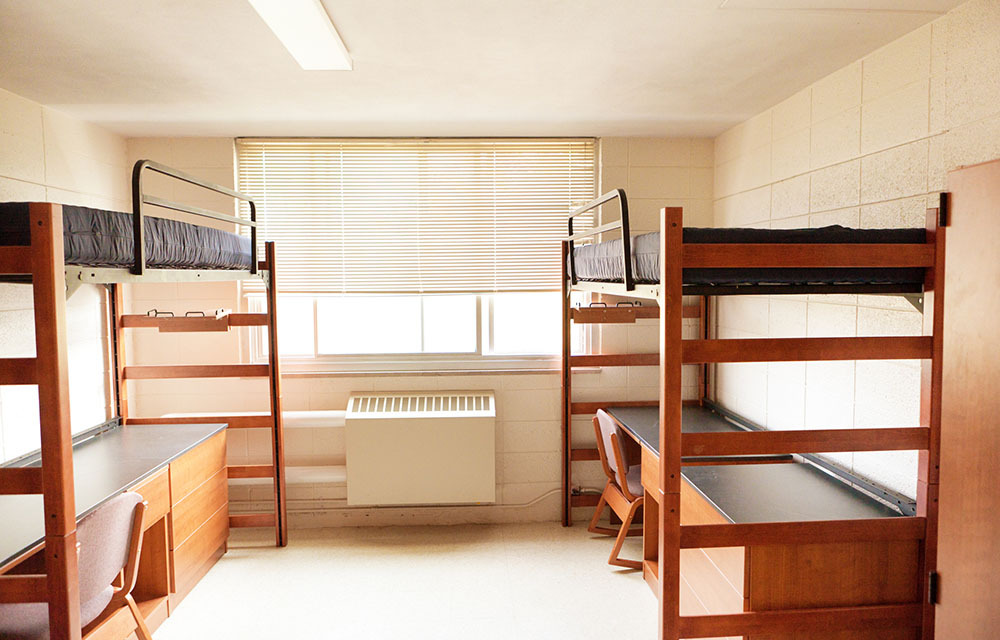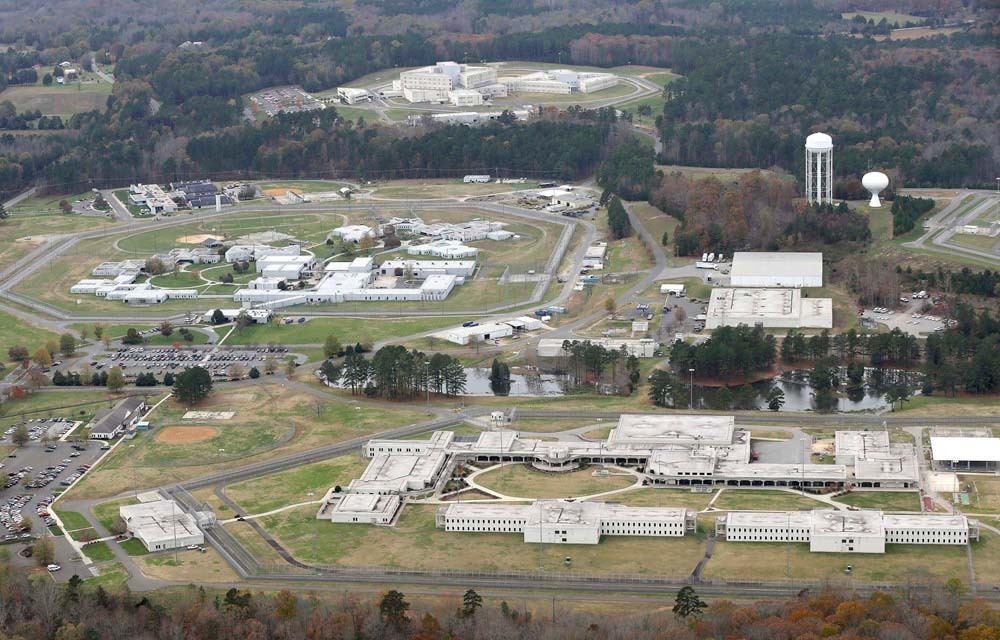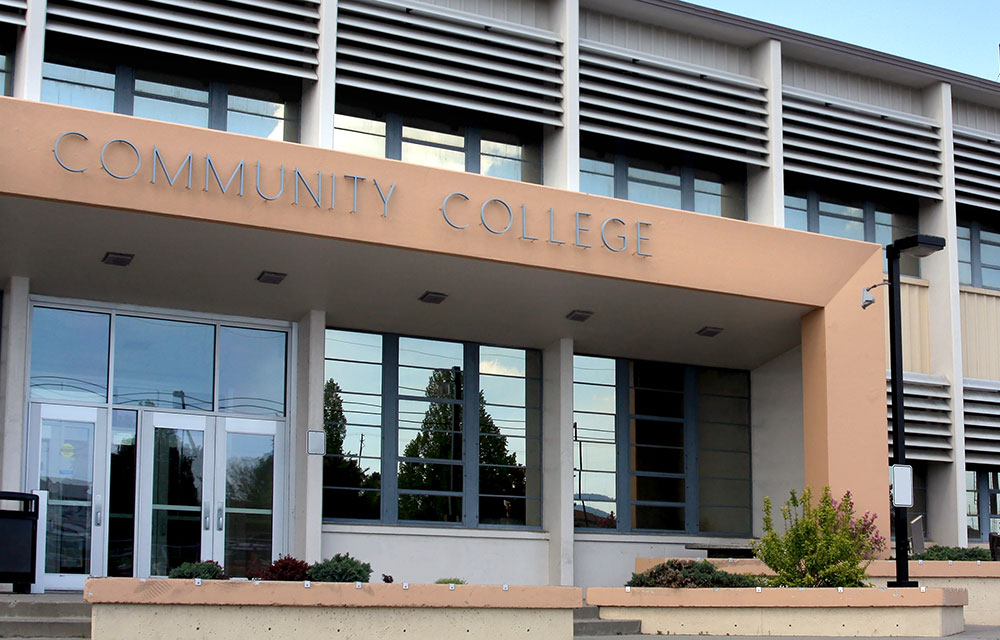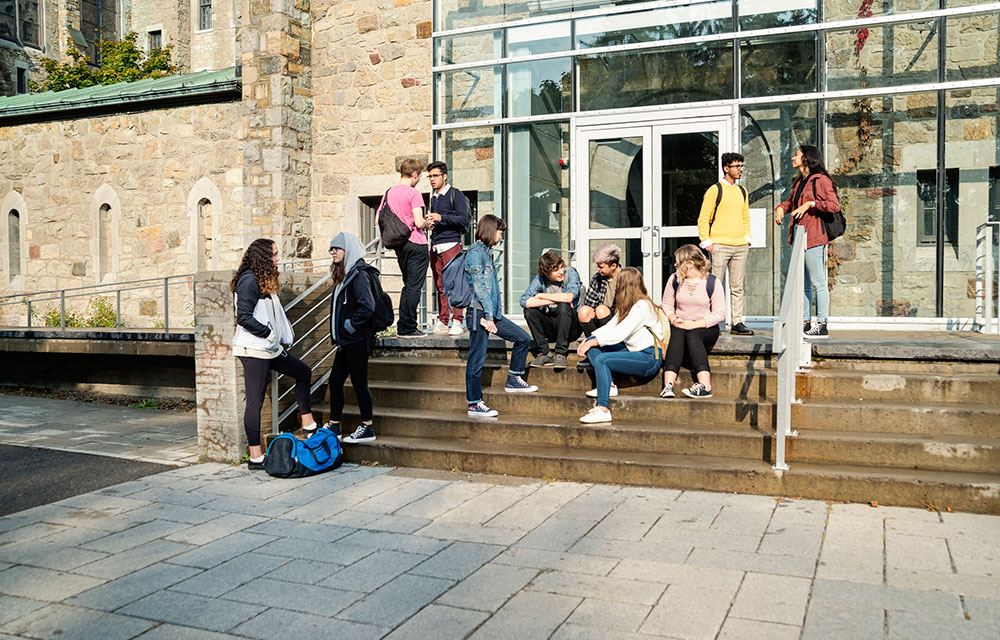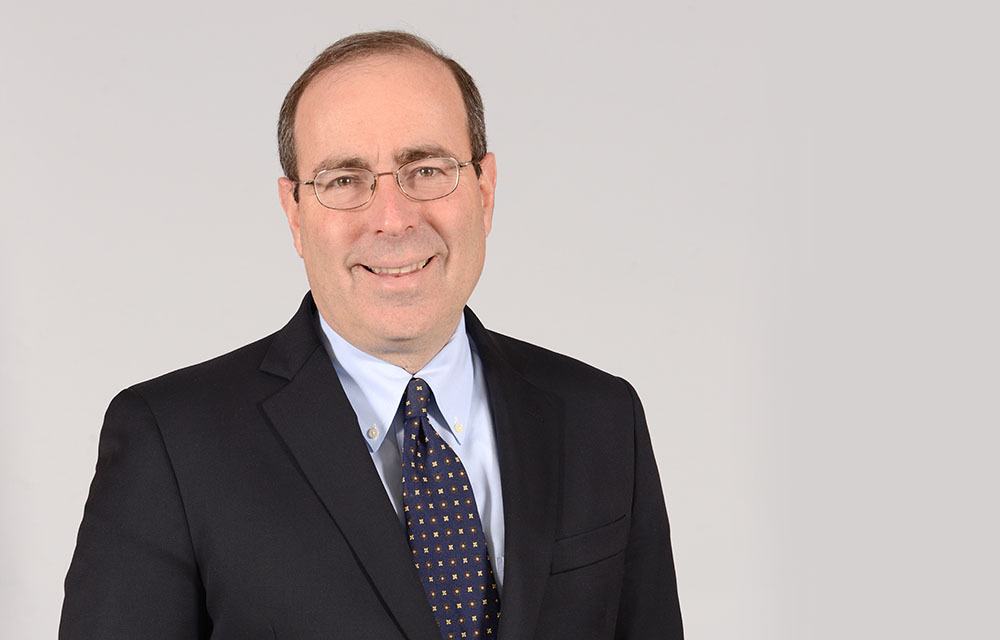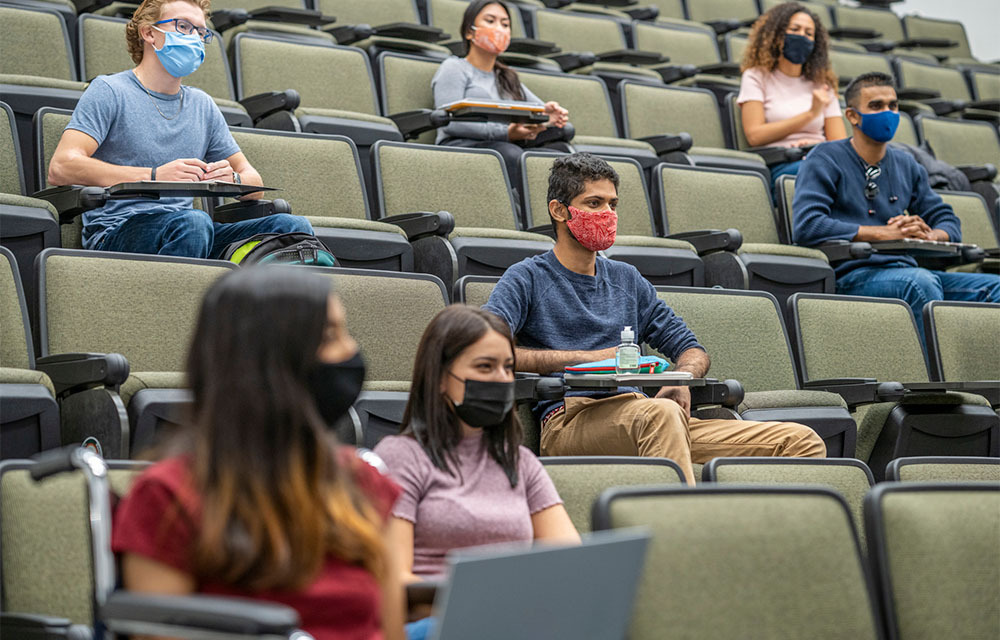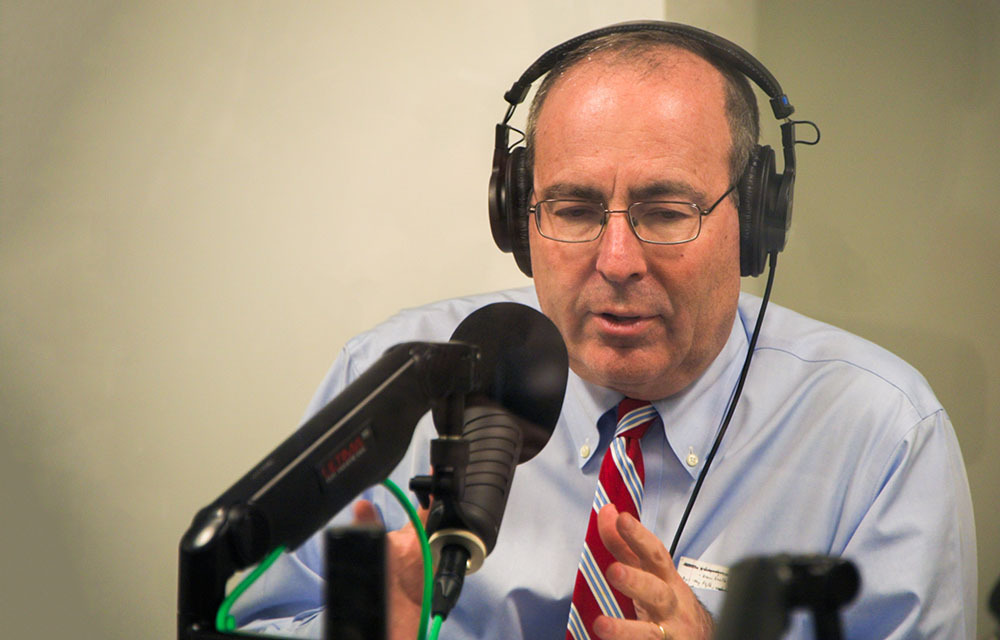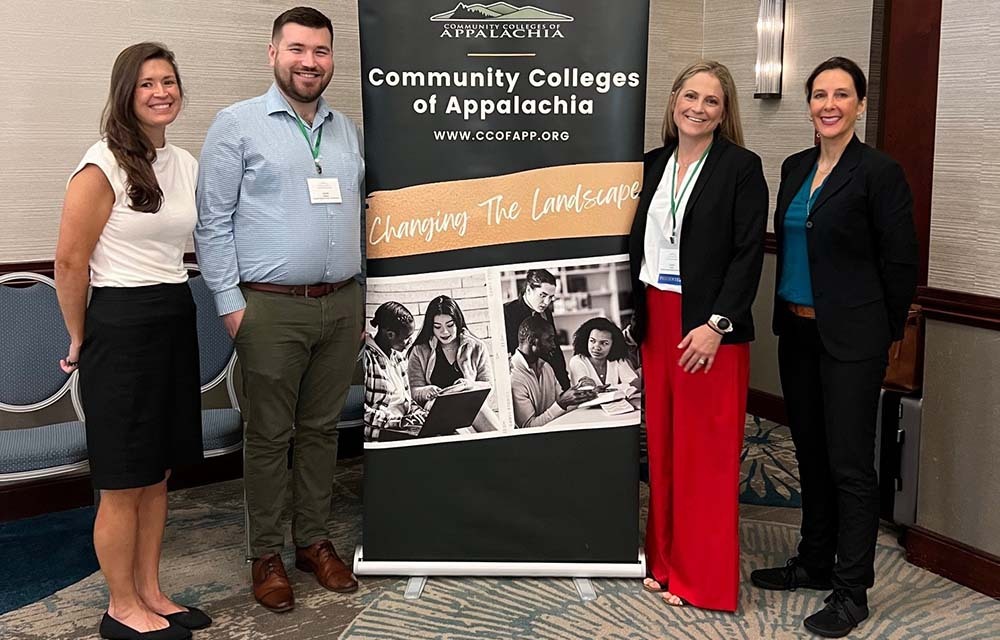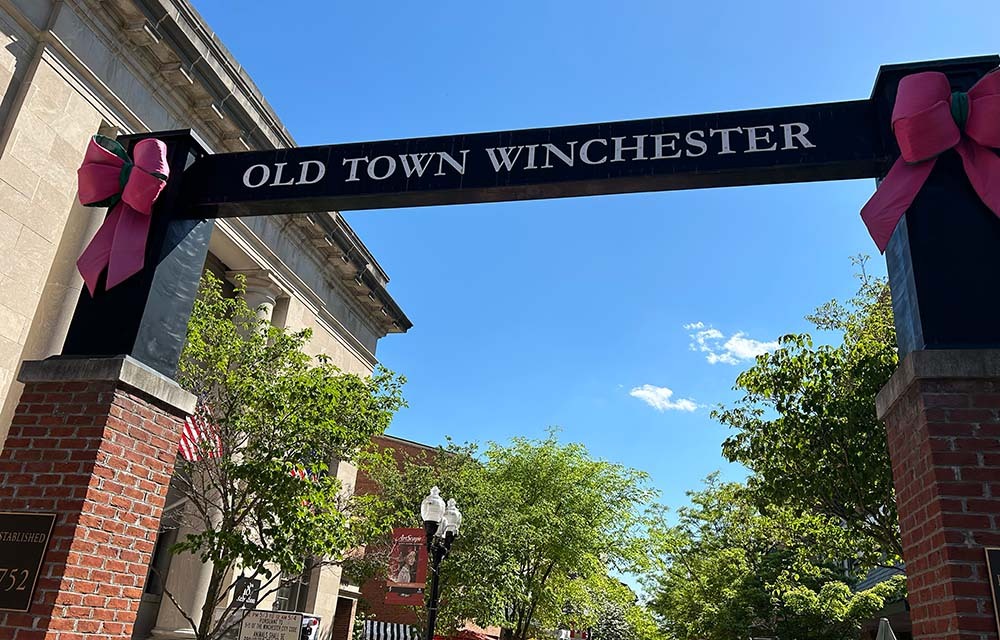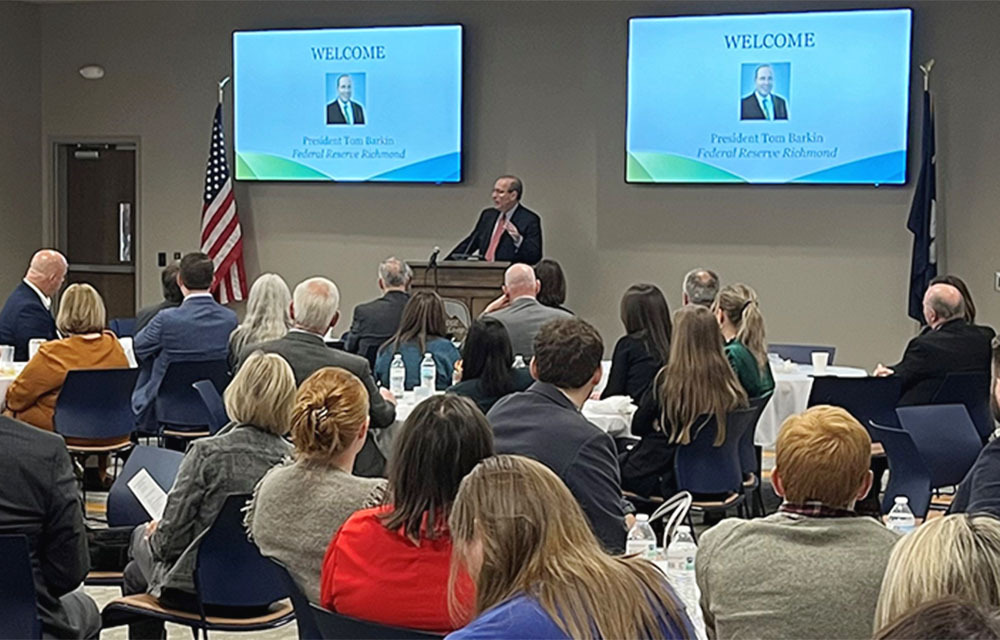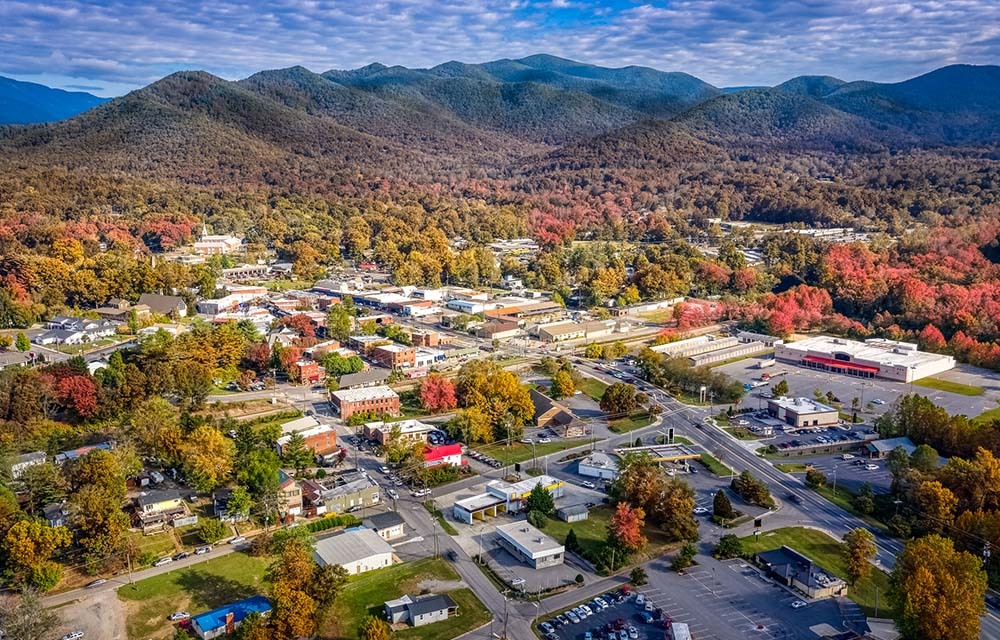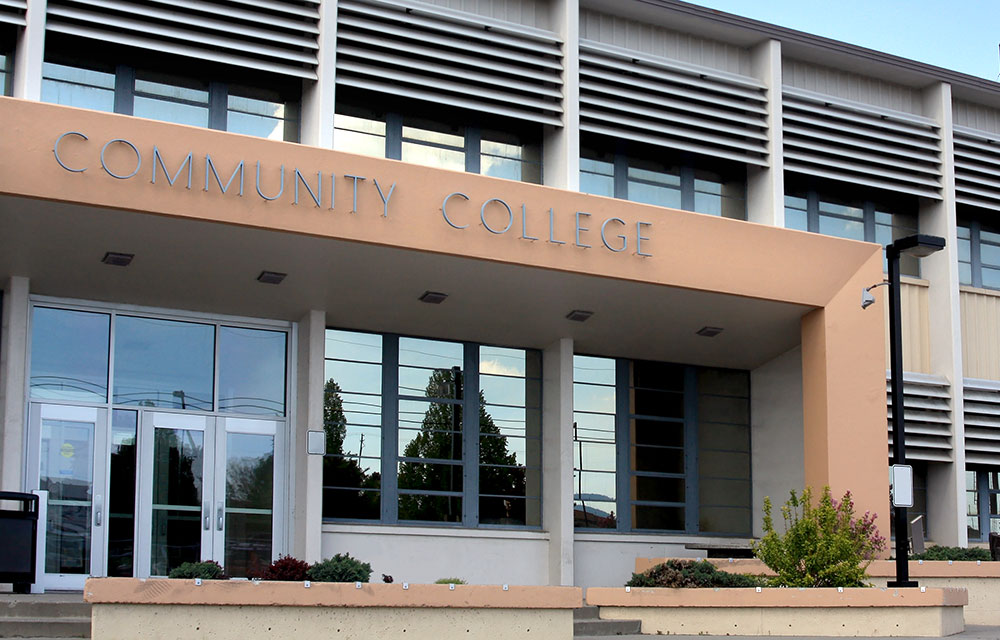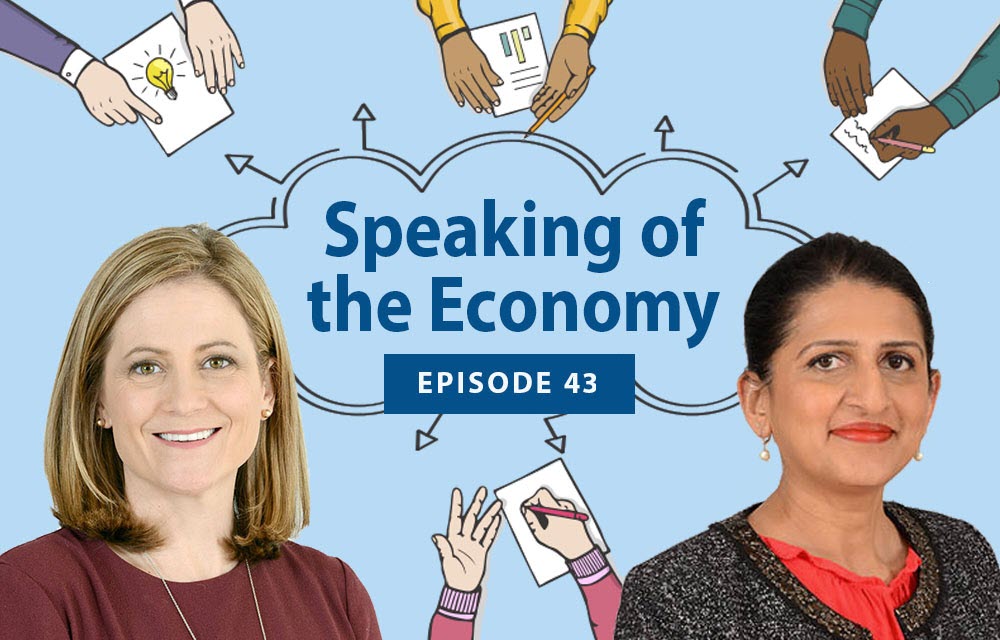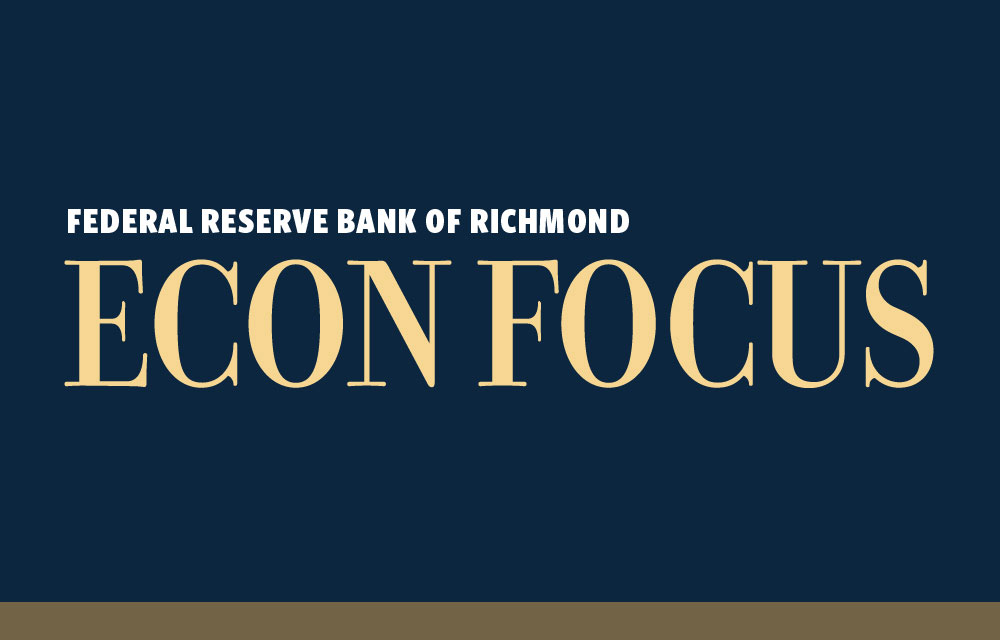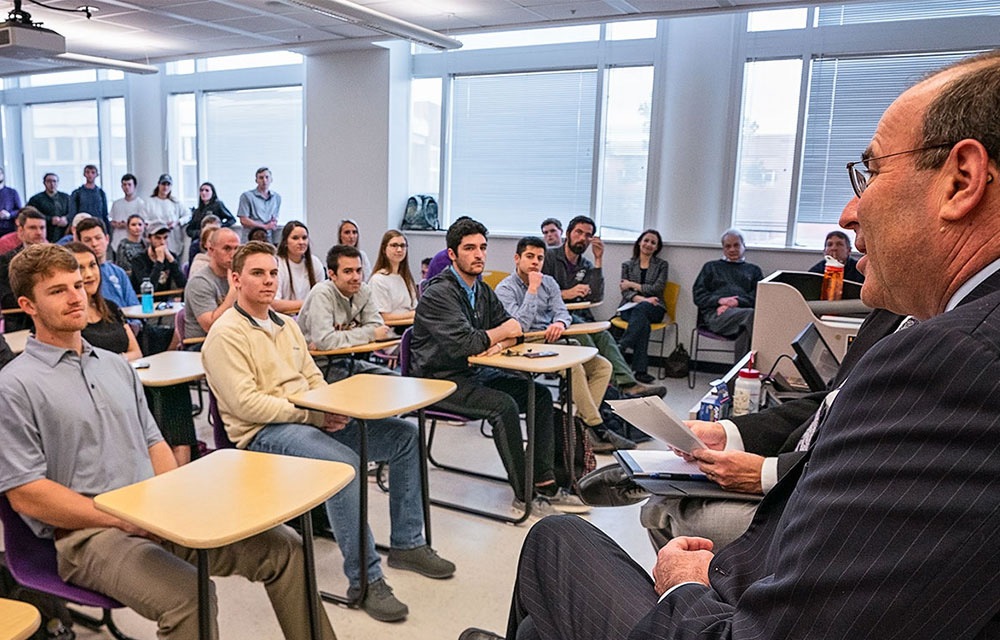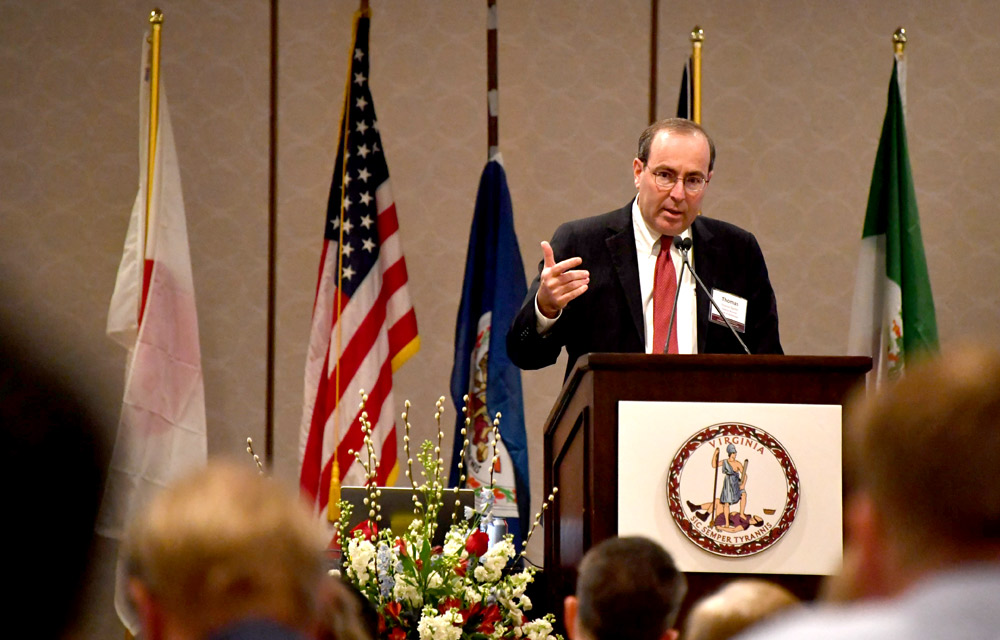Congress' passage of H.R.1 (OBBA) has brought new changes to higher education funding, including the establishment of a Workforce Pell Grant program. What does this mean, and how might agencies, institutions, and students respond?
Community Colleges

Explore our research on community colleges and their role in workforce and economic development.
 Updating Results
Updating Results
Davy Sell and Anthony Tringali discuss the housing needs of community college students and the challenges these institutions face in meeting the demand for affordable options. Sell is a research analyst and Tringali is a research associate at the Federal Reserve Bank of Richmond.
Wraparound services like transportation assistance and child care foster student success. This post highlights how some community colleges are supporting student parents.
Community colleges can leverage a number of creative strategies and partnerships to provide long-term housing solutions for the unique student populations they serve.
Although community college enrollment has increased, housing has also become a growing obstacle for student success.
Stephanie Norris and Matthew Wells discuss their recent research on workforce development programs at community colleges that are aimed at helping the incarcerated re-enter the workforce after they are released. Norris is a senior research analyst and Wells is a senior economics writer, both at the Federal Reserve Bank of Richmond.
New data on credentials earned by undergraduate students show that postsecondary attainment is not a one-size-fits all endeavor.
Stephanie Norris
Associate Director, Community College Initiative
Programs within and outside prison walls provide opportunities for a new beginning.
Results from the 2024 Survey of Community College Outcomes indicate that Pell Grant recipients from the 2019-2020 cohort had success rates that lagged their non-Pell Grant recipient peers. While both groups earned associate degrees at roughly the same rate, Pell Grant recipients were less likely to transfer to a four-year institution prior to receiving an award.
Laura Dawson Ullrich
Director, Community College Initiative
This post both updates and corrects a previous post about fall 2024 college enrollment: Total undergraduate college enrollment increased 4.5 percent nationwide compared to fall 2023.
Laura Dawson Ullrich
Director, Community College Initiative
Performance-based funding policies are designed to incentivize institutions to meet a set of performance metrics, and in return, receive additional revenue. However, designing and implementing these models is complex.
Hurricane Helene caused widespread destruction across the Fifth District. Two community college presidents in North Carolina shared how the storm impacted their institutions and the role they have played in the recovery efforts.
Laura Ullrich and Stephanie Norris dive into the initial results of the 2024 Survey of Community College Outcomes, including information on completion rates, transfer rates, and enrollment at more than 120 community colleges in five states. Ullrich and Norris are the director and associate director, respectively, of the Richmond Fed's Community College Initiative.
Traditional data sources often don't tell the full story about community colleges and their contributions. To fill the information gap, the Richmond Fed has launched the Survey of Community College Outcomes.
The Richmond Fed's community college team recently unveiled results of the 2024 Survey of Community College Outcomes during a webinar that highlighted key findings and insights from two community college presidents.
The Survey of Community College Outcomes aims to capture the positive outcomes and critical role community colleges play in the workforce development needs of their communities.
Tom Barkin
President and Chief Executive Officer
In 2024, 121 schools from across all five states in the Fifth District participated in the Survey of Community College Outcomes. We also expanded our survey to include more detailed data on community college wraparound services.
In 2024, 121 schools from across all five states in the Fifth District participated in the Survey of Community College Outcomes. We also expanded our survey to include more detailed data on community college wraparound services.
A preview of the NSC's fall 2024 college undergraduate enrollment is here, and as anticipated, freshmen enrollment appears to have declined, although total enrollment is up.
Laura Dawson Ullrich
Director, Community College Initiative
Wraparound services offer a wide range of support that may otherwise prevent students from completing their education. However, funding wraparound services at community colleges can be challenging.
A sneak peek at results provides some insights on what makes a community college successful, often influenced by the types of students they serve and their local workforce development needs.
Recently released evidence from the NCES indicates the prevalence of personal and educational disruptions on community college students, but more detailed data would be needed to see the entire picture.
Stephanie Norris
Associate Director, Community College Initiative
Tom Barkin, president and CEO of the Federal Reserve Bank of Richmond, looks back on recent economic trends and how they have shaped the current state of the national economy.
As we wrap up data collection for 2024 and prepare to release our results in November, this post highlights what we've done so far, what we're working on, and future plans for the project.
Laura Dawson Ullrich
Director, Community College Initiative
Initial IPEDS estimates show community colleges serve almost 75 percent of dually enrolled students nationwide, and there is significant variation across states, institution types, and student demographics.
Stephanie Norris
Associate Director, Community College Initiative
The credential-jobs misalignment among middle-skill workers has an impact on the economy, causing inefficiencies in employer-employee matching. Rethinking how community colleges and universities approach transfer agreements could provide better alignment.
With an anticipated decline in the college-age population, high costs of four-year degrees, and changing demands among employers, parents, and students, higher education seems to be at a crossroads.
College degree attainment is associated with higher labor force participation, and although better data is needed to understand fully, this seems to also be true for those who have some college but no degree.
Winchester, Virginia, is known for its blend of history, culture and natural beauty, making it a popular destination for visitors and a vibrant community for its residents. The Winchester Metro Area is the fastest growing metro area in the state of Virginia, with its population growing at almost five times the rate of Virginia as a whole. In May, our Community Conversations team visited the Winchester area to learn more about their economic strengths and opportunities.
Stephanie Norris and Laura Ullrich explain how an effort to make it easier for prospective college students to apply for federal financial aid has had ripple effects on enrollment at community colleges and other institutions of higher education. Norris is a senior research analyst and Ullrich is a senior regional economist at the Richmond Fed.
Community colleges serve students in many ways depending on their educational goals, so much of the value these institutions provide for their communities is overlooked when measuring success.
Stephanie Norris
Associate Director, Community College Initiative
The looming FAFSA crisis has continued into June, likely leading to a decrease in enrollments for grant and federal loan dependent schools. In turn, community colleges may see an enrollment increase.
Laura Dawson Ullrich
Director, Community College Initiative
Historically, most higher education state and local spending has gone to four-year institutions. As community colleges play an increasing role in training workers for high-demand jobs, have funding patterns kept up?
Issues surrounding the new FAFSA form have led to a sharp decline in form completions for the coming academic year. This could result in overall enrollment declines across higher education, but it is likely to hit some groups of students and institutions harder than others.
The motivations behind the new gainful employment policy are noble, but community colleges, especially in rural areas, could be disproportionately harmed by the earnings premium test.
In this article, we discuss the history and motivation of federal gainful employment legislation and what the new rules entail.
Laura Ullrich and Jacob Walker review data they have gathered from the Richmond Fed Survey of Community College Outcomes about high school students who take dual enrollment classes. They also discuss differences in how these classes are funded.
Dual enrollment programs can play an important role in creating a strong, educated workforce, but they need to make sure the funding policies are available and effective.
Community colleges offer non-credit workforce training programs that prepare students for high-demand jobs. Data on these programs and their students are limited. The Richmond Fed's Survey of Community College Outcomes aims to bridge the data gap.
Laura Dawson Ullrich and Jacob Walker
Pell Grants make community college more accessible for low-income students, but those enrolled in non-credit coursework aren't eligible. Expanding eligibility would be significant for both institutions and students.
Jacob Walker
Data on dual enrollment programs is limited, but through the Richmond Fed's Survey of Community Colleges Outcomes, we now have a better understanding of how Fifth District community colleges serve high school students and how these students perform.
Jacob Walker
Community colleges started out as junior colleges and meant to restrict access to higher education. However, they have evolved to increase access to higher education and the workforce.
Laura Dawson Ullrich
Director, Community College Initiative
The Richmond Fed Community Conversations team visited two South Carolina counties that are partnering with schools to prepare a skilled workforce.
The Richmond Fed hosted two programs on November 15 that unveiled a new approach to measuring the success of community colleges.
Laura Ullrich provides an update on the Richmond Fed Survey of Community College Outcomes, which aims to provide more accurate and detailed data on the performance of community colleges and their students. Ullrich is a senior regional economist at the Charlotte branch of the Federal Reserve Bank of Richmond.
In order to observe Fifth District community college outcomes, we decided to collect consistent data that would enable us to calculate a new success metric: the Richmond Fed Community College Success Rate.
Jason Kosakow, Laura Dawson Ullrich and Jacob Walker
Upcoming Event: The general public is invited to join the Richmond Fed on Wednesday, Nov. 15 for an enlightening conversation on the evolving role community colleges play in workforce development. Registration required.
The Federal Reserve Bank of Richmond has developed the Survey of Community College Outcomes to better define student and institution success and to provide insight into the wide variety of programs offered and students served across the Fifth District. After a successful initial pilot in 2022, The Federal Reserve Bank of Richmond moved into an extended pilot phase in 2023. Join Richmond Fed leaders Laura Ullrich and Jason Kosakow, along with two community college administrators, to learn more about the survey and its goals, and to view results from the extended pilot.
Over the past year, we surveyed 63 community colleges in states across the Fifth District to better understand community college performance in our region and to offer a fuller, more representative metric for measuring the success of these important institutions.
Between the webinar on the Survey of Community College Outcomes and the District Dialogues event, we hope you can join us on Nov. 15.
Laura Dawson Ullrich
Director, Community College Initiative
Community colleges differ from four-year institutions in important ways, but they are often measured by the same metrics.
Laura Dawson Ullrich
Director, Community College Initiative
A recent Community Conversations visit to southern West Virginia revealed efforts underway to transform the economy from coal-based to one sustained by natural resources.
Funding formulas for higher education have traditionally been based primarily on full-time equivalent enrollment. This creates disparities between funding for four-year institutions and community colleges that may worsen over time.
Laura Dawson Ullrich
Director, Community College Initiative
The STEM East initiative aims to show students in eastern North Carolina how they can stay and thrive in their home communities.
Understanding and appropriately measuring the role that community colleges play in rural areas is important to how we evaluate policies and funding for workforce and community development throughout the rural Fifth District.
North Carolina has taken dual enrollment/dual credit one step further with its Cooperative Innovative High Schools: high schools that are specifically designed for co-enrollment at a university or community college.
Jacob Walker
HEERF dollars helped community colleges and their students withstand pandemic disruptions. But schools that used the money for revenue replacement or other recurring items may have difficulty operating in a post-HEERF world.
Laura Dawson Ullrich and Meher Narielvala
A recent study suggests that admission restrictions for certain college majors are pushing some students into lower-earning career paths. What could this mean for students transferring from community colleges to four-year institutions in the Fifth District?
Jacob Walker
Demand for non-credit programs at community colleges is growing. What does this mean for the future of community college offerings?
Laura Dawson Ullrich
Director, Community College Initiative
Community college graduation rates lag those of their four-year counterparts in the Fifth District. Is this evidence of failure or mismeasurement?
Jacob Walker and Laura Dawson Ullrich
The calculation of college graduation rates is complicated, and many community college students are left out of the formula altogether.
Laura Dawson Ullrich
Director, Community College Initiative
A large number of high school students attend community college in the United States, with higher rates observed in rural areas. While this enrollment trend has grown over the past twenty years, data on these students' success has not.
Laura Dawson Ullrich
Director, Community College Initiative
Non-credit programs provide community college students an opportunity to obtain shorter-term training and credentials. These programs are becoming more popular, but we currently know very little about non-credit students.
Laura Dawson Ullrich
Director, Community College Initiative
Many students use two-year colleges to determine whether they should go on to a four-year college.
Samira Gholami and Nicholas Trachter
Hispanic postsecondary enrollment has nearly doubled in the Fifth District over the past decade, contributing to increased diversity across college campuses. Organizations work to engage Hispanic youth throughout the college application and attendance process to ensure their success as college students.
The Richmond Fed's Survey of Community College Outcomes presents a new way to measure success that includes previously underrepresented cohorts of students, including those receiving Pell grants.
Laura Dawson Ullrich and Jacob Walker
Laura Ullrich and Jason Kosakow discuss how community colleges contribute to their local economies, especially rural communities, and how their new survey addresses knowledge gaps about these important contributions. Ullrich is a regional economist based at the Richmond Fed's Charlotte office and Kosakow is the Bank's survey director.
This new system for measuring community college outcomes better reflects how the institutions are serving their students and communities than current data collection methods.
Laura Ullrich and Urvi Neelakantan discuss trends in enrollment at community colleges and the role of these educational institutions in the economy.
While all sectors of higher education have experienced declines, community colleges have been hardest hit: this fall, community college enrollment declined significantly for the second consecutive year.
Laura Dawson Ullrich
Director, Community College Initiative
Vance-Granville Community College's early college high schools and workforce programs are improving education and job opportunities for area residents.
Laura Dawson Ullrich and Lucas Moyon
Community college enrollment declined significantly across the country in fall 2020, breaking the typical pattern of increased enrollment during a recession.
Roisin McCord and Laura Dawson Ullrich
Andy Bauer provides an update on economic conditions in Maryland as the state recovers from the severe downturn caused by the COVID-19 pandemic.
Tom Barkin travelled to Hickory, N.C. to take part in a video roundtable with industry leaders. These included five area furniture manufacturing companies, textile suppliers and more.
Tom Barkin
President and Chief Executive Officer
Richmond Fed president Tom Barkin discusses how community colleges can help workers affected by COVID-19 job loss.
Tom Barkin
President, Federal Reserve Bank of Richmond
COVID-19 has disrupted traditional higher education institutions and is forcing institutions to make substantial changes to their plans for the coming academic year.
Lucas Moyon and Laura Dawson Ullrich
Community colleges serve a larger share of minority students than public or private four-year schools.
Laura Dawson Ullrich
Director, Community College Initiative
Richmond Fed President Tom Barkin highlighted themes for rural communities — education, jobs, de-isolation, and participation — at the Virginia Governor's Conference on Agricultural Trade.
Tom Barkin
President, Federal Reserve Bank of Richmond
Fifth District businesses have expressed concerns over a growing skills mismatch in the local labor force. As a result, some have turned to apprenticeship programs.
Audrey Polk






